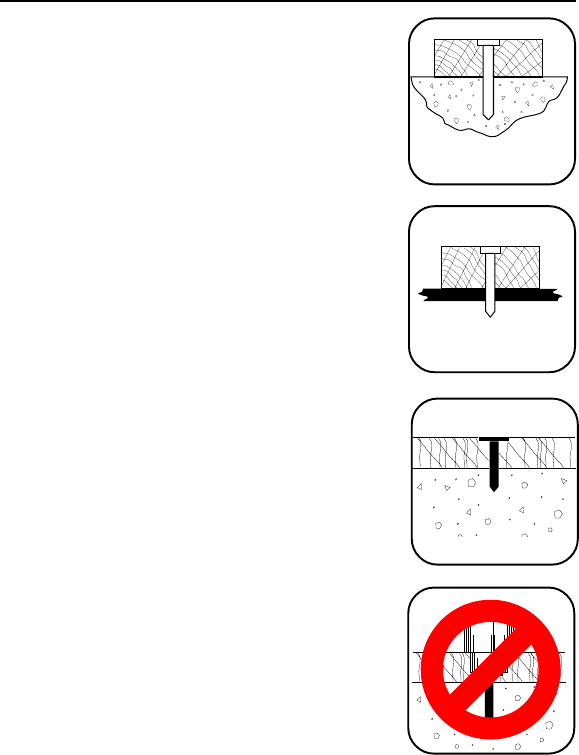
13
099494
Selecting Power Fasteners
and Power Loads
FASTENING INTO CONCRETE
The proper power fastener length can be determined by
adding the thickness of the material to be fastened and the
amount of fastener that will actually penetrate the con-
crete. The concrete must be three times as thick as the
intended fastener penetration. In most cases, penetration
should be approximately 1" to 1 1/4" into the base concrete
material.
FASTENING INTO STEEL
The proper fastener length can be determined by adding
the thickness of the material to be fastened and the
thickness of the steel. The point of the power fastener
must go completely through the steel.
POWER LOADS
Always start with the lowest power level (green-level 3). If
the first test fastener does not penetrate to the desired
depth, move to the next highest power level (yellow-level
4). Increase until a proper fastening is made.
IMPORTANT: Damage to the tool will result if the above
instructions are not followed (see illustrations to right and
lower right).
OVERDRIVEN POWER FASTENERS
AND PISTON
An overdriven power fastener results when too strong of
a power load is used causing the piston to extend past the
muzzle. Move to the next lightest power load. Repeated
overdrive will damage your tool. By avoiding overdrive,
you can extend the life of your tool considerably and avoid
costly repairs.
NOTE: Never fire the tool without a power fastener. This
can damage the tool and/or cause possible injury to the
operator.
IMPORTANT: Only use 2 1/2" power fasteners with the
standard guide. 3" power fasteners can be used with
optional guide, part number 301110.
482-85
Wood or Non-Metals
To Concrete
482-67
OVERDRIVE
Piston Extended
Out of Muzzle
482-79
Wood or Non-Metals
To Steel
482-66
RIGHT
Flush With Surface


















